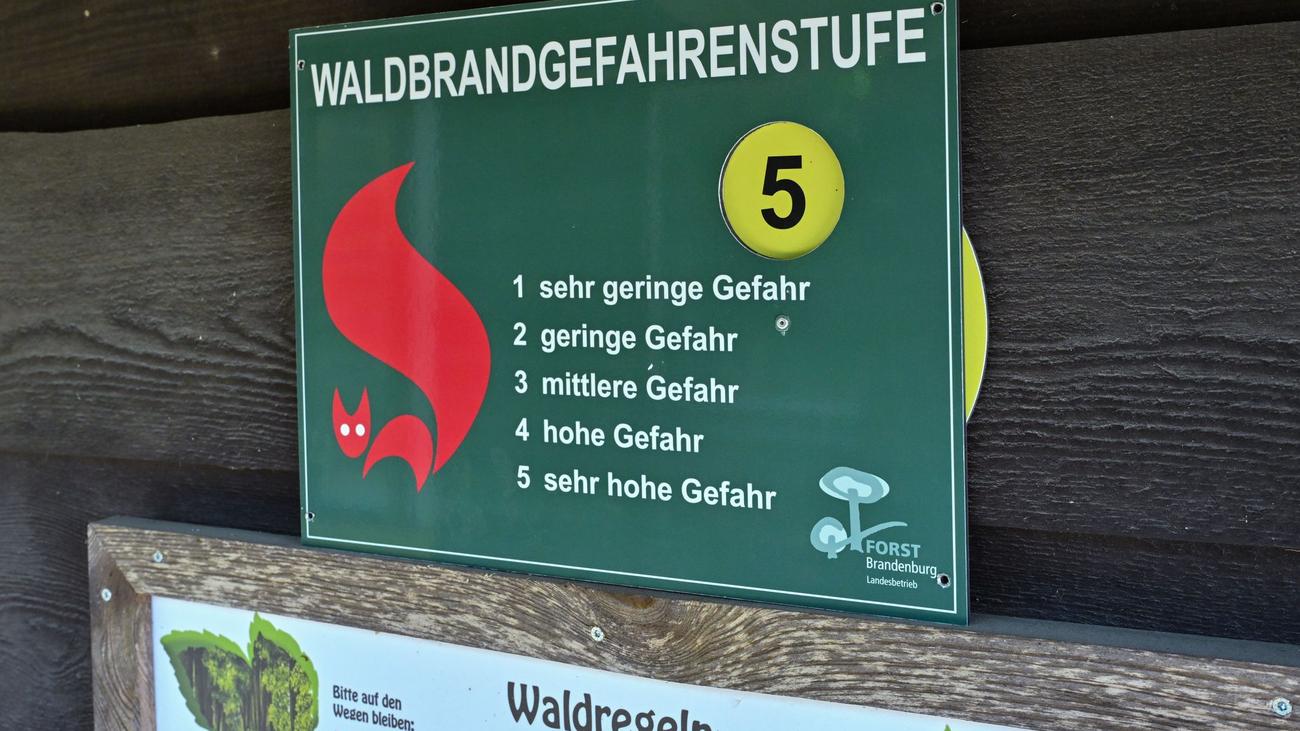
Brandenburg on High Alert as Wildfire Risk Soars, Triggering Emergency Responses and Preparations
Brandenburg, a state known for its sprawling pine forests, is facing a heightened threat from wildfires as dry conditions and rising temperatures elevate the risk to critical levels. Nine out of fourteen districts in the region are currently experiencing the highest wildfire danger level, a stark reminder of the vulnerability of its ecosystems. The situation has prompted a series of emergency responses, highway closures, and proactive drills aimed at mitigating potential devastation.
The recent surge in wildfires has placed immense pressure on local fire departments, who have been relentlessly battling blazes since the beginning of May. One particularly disruptive incident occurred on the A24 highway in the Ostprignitz-Ruppin district, where firefighting operations necessitated a complete closure of the road. The resulting smoke and visibility impairment posed a significant hazard to drivers, highlighting the far-reaching consequences of these uncontrolled fires.
Adding to the complexity of the situation, a fire erupted near Pfalzheim in the Kyritz-Ruppiner Heide region, an area historically used for military training, which raised concerns about unexploded ordnance. The blaze, detected by an automated forest fire camera, engulfed approximately 2,500 square meters of land contaminated with munitions. The cause of this fire remains under investigation, with authorities exploring various possibilities, including spontaneous combustion triggered by unstable munitions, a phenomenon not uncommon in such areas.
While the exact cause of the Pfalzheim fire is yet to be determined, officials have underscored the significant role of human activity in triggering the vast majority of wildfires. According to the state’s environmental ministry, human actions account for over 90% of all forest fires, a sobering statistic that highlights the importance of public awareness and responsible behavior in preventing these incidents. Careless disposal of cigarettes, unattended campfires, and even sparks from machinery can quickly ignite dry vegetation, especially during periods of heightened fire risk.
The A24 highway also experienced a separate incident near the Borkower See rest area, where a roadside embankment fire quickly spread due to strong winds. The rapidly escalating blaze consumed approximately 1,500 square meters of land, necessitating a temporary closure of the highway in the direction of Berlin. The incident underscores the speed at which wildfires can spread, particularly in windy conditions and with readily available dry fuel.
While the southern regions of Brandenburg are currently facing the most acute wildfire threat, the situation remains precarious across the entire state. Four northern districts are experiencing the second-highest level of fire danger, while the Uckermark region is currently classified as being under medium fire risk.
Fortunately, weather forecasts offer some hope for a respite in the coming days. The German Meteorological Service anticipates a decrease in wildfire danger over the weekend and into next week, predicting a return to the medium risk level across most of the region. This anticipated change in weather patterns could provide a much-needed window for firefighters and emergency responders to regroup and reinforce their defenses.
In anticipation of potential future outbreaks, several districts in southern Brandenburg are gearing up for a large-scale emergency preparedness exercise dubbed "Wipfel-Brand" (Crown Fire). This exercise, scheduled for May 10th, will involve hundreds of emergency personnel and will focus on simulating and responding to a severe wildfire scenario. Such exercises are crucial for ensuring that emergency responders are well-trained and coordinated in the event of a major wildfire.
Brandenburg’s susceptibility to wildfires is rooted in its unique environmental characteristics. The state is dominated by extensive pine forests, which are highly flammable, particularly when dry. The region also receives relatively low rainfall and is characterized by sandy soils that drain quickly, further exacerbating the dryness and flammability of the vegetation. These factors combine to make Brandenburg the state with the highest wildfire risk in Germany.
The situation in Brandenburg serves as a stark reminder of the increasing threat of wildfires in a changing climate. Prolonged periods of drought, rising temperatures, and increased frequency of extreme weather events are all contributing to a greater risk of wildfires in many regions around the world. The challenges faced by Brandenburg are not unique, and the lessons learned from its experiences can be valuable for other regions grappling with similar threats.
Looking back to the year 2022, Brandenburg experienced a particularly devastating wildfire season, with more than 500 separate wildfires recorded. The sheer number of these fires underscored the intensity of the drought conditions and the severity of the fire risk that year. The experience of 2022 has undoubtedly informed the state’s current preparedness efforts and its determination to mitigate the risks posed by future wildfires.
The ongoing efforts to combat wildfires in Brandenburg highlight the critical importance of proactive prevention measures, rapid response capabilities, and effective collaboration between emergency responders, government agencies, and the public. By investing in these areas, Brandenburg can better protect its valuable forests, its communities, and its natural heritage from the devastating effects of wildfires. The situation demands vigilance, preparedness, and a collective commitment to responsible behavior in order to minimize the risk of future outbreaks. The fate of Brandenburg’s forests, and the well-being of its residents, depends on it.
